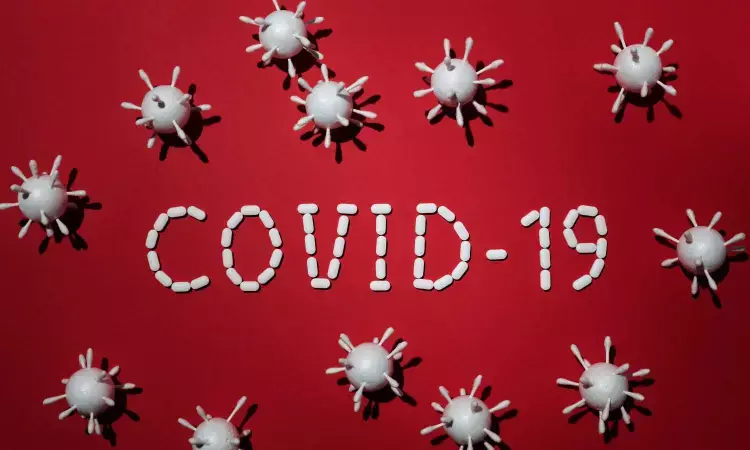- Home
- Medical news & Guidelines
- Anesthesiology
- Cardiology and CTVS
- Critical Care
- Dentistry
- Dermatology
- Diabetes and Endocrinology
- ENT
- Gastroenterology
- Medicine
- Nephrology
- Neurology
- Obstretics-Gynaecology
- Oncology
- Ophthalmology
- Orthopaedics
- Pediatrics-Neonatology
- Psychiatry
- Pulmonology
- Radiology
- Surgery
- Urology
- Laboratory Medicine
- Diet
- Nursing
- Paramedical
- Physiotherapy
- Health news
- Fact Check
- Bone Health Fact Check
- Brain Health Fact Check
- Cancer Related Fact Check
- Child Care Fact Check
- Dental and oral health fact check
- Diabetes and metabolic health fact check
- Diet and Nutrition Fact Check
- Eye and ENT Care Fact Check
- Fitness fact check
- Gut health fact check
- Heart health fact check
- Kidney health fact check
- Medical education fact check
- Men's health fact check
- Respiratory fact check
- Skin and hair care fact check
- Vaccine and Immunization fact check
- Women's health fact check
- AYUSH
- State News
- Andaman and Nicobar Islands
- Andhra Pradesh
- Arunachal Pradesh
- Assam
- Bihar
- Chandigarh
- Chattisgarh
- Dadra and Nagar Haveli
- Daman and Diu
- Delhi
- Goa
- Gujarat
- Haryana
- Himachal Pradesh
- Jammu & Kashmir
- Jharkhand
- Karnataka
- Kerala
- Ladakh
- Lakshadweep
- Madhya Pradesh
- Maharashtra
- Manipur
- Meghalaya
- Mizoram
- Nagaland
- Odisha
- Puducherry
- Punjab
- Rajasthan
- Sikkim
- Tamil Nadu
- Telangana
- Tripura
- Uttar Pradesh
- Uttrakhand
- West Bengal
- Medical Education
- Industry
Overestimation of O2 saturation by pulse oximetry may delay treatment of COVID-19 and increase likelihood of readmission

A comprehensive cohort study published in JAMA Network Open by Ashraf Fawzy and colleagues has unveiled a concerning phenomenon related to pulse oximeters and their implications for COVID-19 treatment and outcomes, with notable disparities among different racial groups. The study, encompassing data from 186 acute care facilities in the US between March 2020 and October 2021, focused on patients hospitalized for COVID-19 and their pulse oximetry readings.
Pulse oximeters, widely used to measure oxygen saturation, were found to overestimate oxygen levels in individuals of color, a phenomenon with potential clinical consequences. This discrepancy raised questions about its impact on the timing of COVID-19 treatment and overall clinical outcomes.
The primary objective of the study was to investigate the correlation between the overestimation of oxygen saturation by pulse oximeters and the delay in administering COVID-19 therapy, as well as its connection to hospital length of stay, risk of readmission, and in-hospital mortality.
The research included a diverse group of 24,504 patients, with ages averaging 63.9 years. Of the total, 3922 were Black (16.0%), 7895 were Hispanic (32.2%), 2554 were Asian, Native American or Alaskan Native, Hawaiian or Pacific Islander, or another race or ethnicity (10.4%), and 10,133 were White (41.4%). The study identified that pulse oximetry consistently overestimated oxygen saturation for Black, Hispanic, and other non-White patients compared to their White counterparts. The findings of the study were:
● Pulse oximetry tended to overestimate SaO2 levels for various racial groups compared to White patients. The differences were as follows:
❖ Black patients: 0.93 percentage points (95% CI, 0.74-1.12)
❖ Hispanic patients: 0.49 percentage points (95% CI, 0.34-0.63)
❖ Other racial/ethnic groups: 0.53 percentage points (95% CI, 0.35-0.72)
● Within a subset of 8635 patients whose concurrent SpO2 − SaO2 pairs did not immediately indicate a need for COVID-19 therapy:
● Black patients exhibited a significant likelihood of having pulse oximetry readings that didn't recognize the need for COVID-19 therapy, compared to White patients (adjusted odds ratio [aOR]: 1.65; 95% CI, 1.33-2.03).
● Patients who went unrecognised for needing COVID-19 therapy were:
❖ 10% less likely to receive the necessary COVID-19 therapy (adjusted hazard ratio: 0.90; 95% CI, 0.83-0.97).
❖ At higher odds of hospital readmission (aOR: 2.41; 95% CI, 1.39-4.18), regardless of race (P for interaction = 0.45 and P = 0.14, respectively).
❖ No significant association was found between the unrecognised need for COVID-19 therapy and in-hospital mortality (aOR: 0.84; 95% CI, 0.71-1.01) or length of stay (mean difference: −1.4 days; 95% CI, −3.1 to 0.2 days).
While racial disparities were evident in the likelihood of needing unrecognised therapy, these disparities did not significantly impact in-hospital mortality or the length of hospital stay. This finding underlines the complexity of factors influencing patient outcomes beyond the initial therapy delay.
In conclusion, the study emphasised the crucial role that pulse oximetry plays in COVID-19 treatment and patient outcomes. The discrepancy in oxygen saturation readings has led to delays in treatment delivery, affecting all racial groups, but with notable implications for Black patients in particular. These revelations underscore the need for more accurate monitoring and treatment strategies that account for potential racial disparities, with the ultimate goal of improving healthcare outcomes for all.
Reference:
Fawzy, A., Wu, T. D., Wang, K., Sands, K. E., Fisher, A. M., Arnold Egloff, S. A., DellaVolpe, J. D., Iwashyna, T. J., Xu, Y., & Garibaldi, B. T. (2023). Clinical outcomes associated with overestimation of oxygen saturation by pulse oximetry in patients hospitalized with COVID-19. JAMA Network Open, 6(8), e2330856. https://doi.org/10.1001/jamanetworkopen.2023.30856
Dr Kamal Kant Kohli-MBBS, DTCD- a chest specialist with more than 30 years of practice and a flair for writing clinical articles, Dr Kamal Kant Kohli joined Medical Dialogues as a Chief Editor of Medical News. Besides writing articles, as an editor, he proofreads and verifies all the medical content published on Medical Dialogues including those coming from journals, studies,medical conferences,guidelines etc. Email: drkohli@medicaldialogues.in. Contact no. 011-43720751


